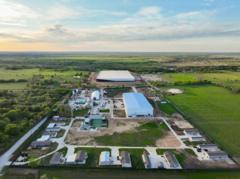Culdesac Tempe, a rental community near Phoenix, offers a unique car-free living experience, drawing inspiration from ancient European towns. Residents share their positive experiences in this innovative environment.
Embracing Car-Free Living: A New Community Model in Arizona

Embracing Car-Free Living: A New Community Model in Arizona
In the heart of Arizona, a revolutionary neighborhood is redefining urban living by eliminating the need for cars altogether.
In the bustling vicinity of Phoenix, Arizona, a groundbreaking initiative is emerging that could reshape urban living: Culdesac Tempe. Conceptualized as the nation’s first car-free neighborhood, this innovative community prides itself on a design reminiscent of quaint Italian and Greek towns, where pedestrian-friendly paths, boutique establishments, and shaded courtyards replace the conventional car-centric developments.
Andre Rouhani and Gabriela Reyes, a family of four, found their ideal home in Culdesac Tempe. Upon visiting this rental community, they were instantly captivated by the enchanting layout, which fosters a strong sense of community among its residents. However, the absence of parking surprised them. Despite the challenges of living without a vehicle, the couple decided the benefits far outweighed the downsides.
“The experience has been overwhelmingly positive,” Mr. Rouhani shared during a recent interview. “We gave our car to Gabriela's father, and we’ve embraced a new lifestyle.” Their decision reflects a growing trend among residents who find joy in sustainable and environmentally friendly living.
Culdesac Tempe's design inherently encourages walking, cycling, and the use of e-scooters, promoting healthier habits and reducing carbon footprints. Residents have reported feeling happier and more connected, with community amenities easily accessible by foot.
As urban areas continue grappling with pollution and traffic issues, Culdesac Tempe stands out as a potential model for future developments. By creating spaces that prioritize community interactions and ecological sustainability, this neighborhood may very well lead the way in redefining modern living for cities across the United States.















